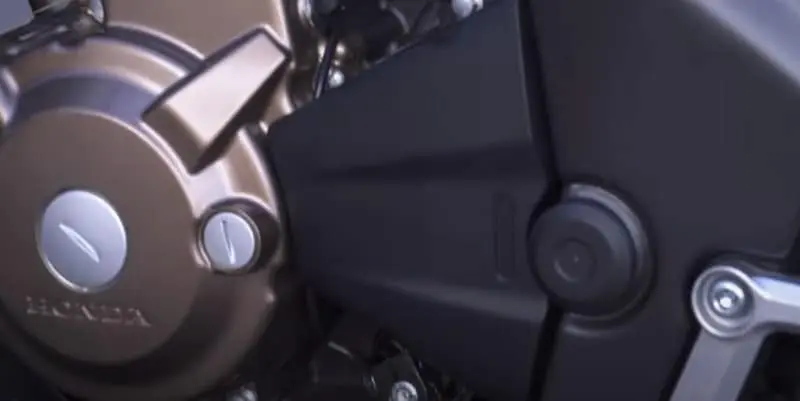In the midst of the winter, it’s easy to fall prey to the common misconception that the best way to protect your motorcycle is to start it up in your garage and let it idle until it warms up.
However, this practice actually does more harm than good. It’s important to note that a motorcycle doesn’t charge its battery when it’s idling.
Moreover, running the engine for about twenty minutes isn’t sufficient to heat it to the required “heat soak” temperature, resulting in the oil’s accumulation of acids and condensation. Hence, avoiding waking up your slumbering motorcycle during the winter months is advisable.
Essential Steps for Winterizing Your Motorcycle
Despite the frosty conditions, there are several steps you can take to ensure your bike is well-protected during winter hibernation.
Cleaning and Covering Your Bike
Firstly, cleaning and waxing your motorcycle is an essential preparatory step before storage. Acidic residues left by bugs or other substances can cause damage to the surfaces if left unattended for extended periods. A clean, waxed surface reduces the likelihood of scratches should anything accidentally brush against the bike.
Protective measures for your motorcycle differ depending on where it’s stored. A simple, clean sheet works as a protective covering for bikes fortunate enough to be stored in a garage.
If your bike is left outside to brave the winter, a high-quality bike cover can help prevent snow and ice build-up while also shielding it from UV exposure. Bike covers range from $30 to $100 and can be conveniently purchased from Revzilla.com
Fuel Management
The type of fuel used during winter storage is a crucial consideration, particularly if the gasoline in your area is treated with ethanol.
Ethanol can be detrimental to your motorcycle, causing potential damage to the fuel tank, gaskets, o-rings, and fuel lines. To manage this, you have two options:
- Drain the entire fuel system and leave the gas cap open for evaporation.
- If feasible, fill your tank with ethanol-free gasoline. You can find locations for ethanol-free gas via www.pure-gas.org. If not available, you can add an ethanol treatment to your fuel. High-quality options include Safeguard by Lucas Oil, Sta-Bil, and Star Tron.
If your bike is only going to be idle for a few winter months, a fuel stabilizer might not be necessary. However, if you plan on keeping it parked for an extended period, it may be a worthwhile addition.
Servicing the Engine
If you want to go the extra mile, consider changing the oil before the winter layoff. Over time, the oil becomes dark and dirty due to combustion and heat, accumulating acidic contaminants. An oil change flushes out these impurities, maintaining a healthy engine and rides.
Battery Maintenance
Winterizing your bike also involves taking care of the battery. A low-charge battery is more susceptible to freezing. While trickle chargers are often used, they can cause sulfation by keeping the battery at full charge, thus shortening its lifespan.
The optimal way to store a battery is to maintain it above 12.5 volts, applying a topping charge when necessary.
Rather than using a basic trickle charger, Optimate chargers are recommended. For winter storage, plug the Optimate in for a few days once a month, depending on the coldness of your region.
An interesting feature of the Optimate charger is its ability to desulfate the battery with power pulses, potentially rejuvenating seemingly unserviceable batteries when disconnected or removed from the bike.
Tire Care
Prolonged inactivity can lead to flat spots on your tires. If possible, raise your bike on a set of stands to prevent this issue.
If your bike must sit on bare concrete, place a piece of cardboard or carpet underneath the tires as a protective barrier to prevent the leaching of oils from the tires.
If you’re using a center stand or a rear stand, putting a piece of cardboard under the front tire is a good idea, even if the floor is painted.
Utilizing Winter for Bike Maintenance

Winter is an excellent opportunity to carry out major maintenance tasks on your bike. Bike shops are usually less busy during the colder months, often offering lower service rates to attract business. Furthermore, technicians are less likely to rush, thus, likely to dedicate more time to each job.
Now is the perfect time for servicing forks, adjusting valves, or servicing shocks – tasks often postponed during the riding season.
You might also be able to further reduce service costs by undertaking some prep work yourself, like removing body panels or detaching the forks or rear shock before bringing your bike in for service.
Moreover, it’s common for tire prices to increase in January, making winter the ideal time to fit new tires. Come spring, your bike will be ready to tackle roads with fresh, grippy tires, irrespective of the road conditions post-winter.
We’d love to hear if you’ve got any additional tips for winterizing your bike. Feel free to share them in the comments section below.
- Key steps in winterizing your bike:
- Clean and wax your bike
- Use a high-quality bike cover
- Fill your tank with ethanol-free gasoline or use ethanol treatment
- Change the oil
- Maintain battery with an Optimate charger
- Raise your bike on stands to protect tires
- Use winter downtime for maintenance and servicing

